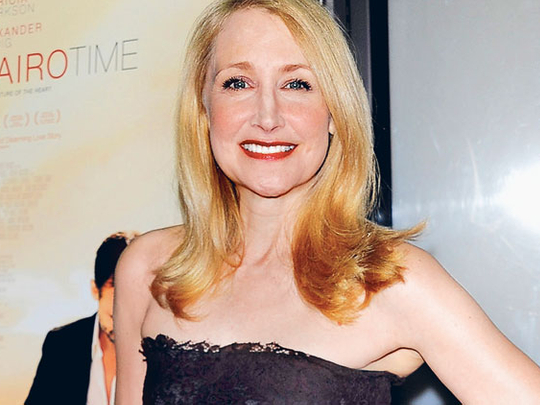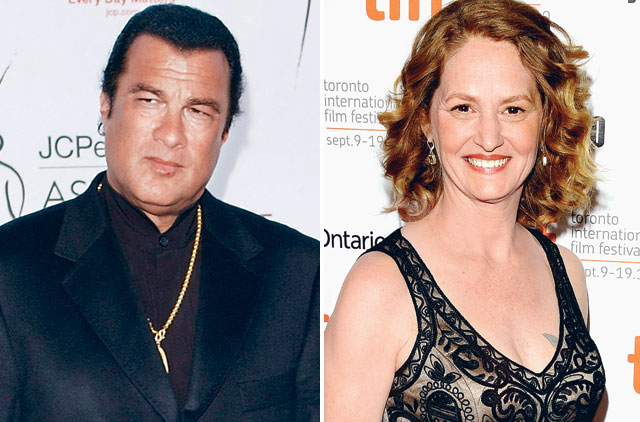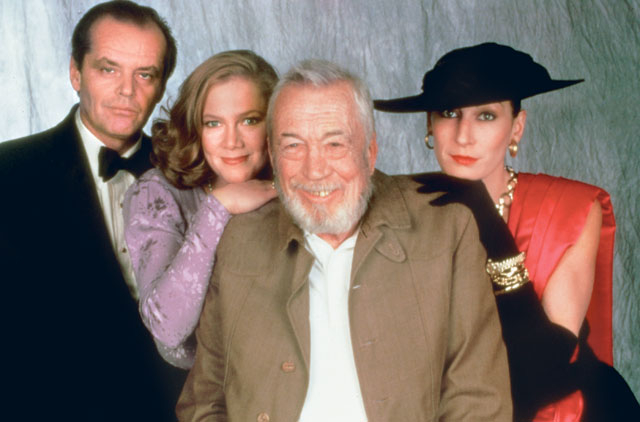
Early next year, Annette Bening will garner an Oscar nomination for her tart, intense performance as Julianne Moore's control-freak lover in The Kids Are All Right. She could just as easily be nominated for her tart, intense performance as a neurotic middle-aged healthcare professional in the underrated film Mother And Child. In effect, after more than a decade of working infrequently, and even then mostly appearing in duds (Being Julia, The Women, Running With Scissors) Bening is making a serious comeback at the age of 52, 20 years after most leading ladies have arrived at the expiration date for their careers.
What makes this return to centre stage even more impressive is that Bening was a bit of a late bloomer at the dawn of her career, not seriously grabbing the public's attention until she starred as a charismatic con artist in The Grifters at the ripe old age of 32.
Late bloomers are a rare breed in Hollywood, but they are a truly rare breed on the distaff side. Hollywood is a dream factory oriented towards hyperactive young males, and young males rarely dream about middle-aged women. The fact that Bening, who worked in the theatre before making her mark on the big screen in her 30s, is now making a serious comeback in her 50s, is truly a miracle in such a vehemently sexist, misogynist, age-biased industry. It helps that she can act. It also helps that she's Tinseltown royalty, as wife of Warren Beatty.
Character actors
Of the few late bloomers in the motion-picture industry, most made their mark as character actors, not as leading men or women. Ben Johnson had been playing the third ornery old cowpoke from the left for decades before he got a chance to shine in The Last Picture Show, which won him a best supporting actor Oscar in 1971. He was 52. Brendan Gleeson, the designated burly sidekick in everything from Braveheart to In Bruges, did not start acting until his mid-30s. Danny Aiello, who did a bit of everything before grabbing the public's attention in films such as Moonstruck and Do The Right Thing, did not start landing major film roles until he was in his late 30s. But none of these actors can truly be called headliners.
Only a few have ever made it big, and usually there are extenuating circumstances. Cher was in her 30s when she made Silkwood, and past 40 when she starred in Moonstruck, but she was hardly an unknown commodity. Nobody thought Colin Firth had star quality until he made the TV version of Pride And Prejudice aged 35, but Firth had been steadily working in small film roles for more than a decade, biding his time.
Making a star
And then there is The Curious Case of Steven Seagal. This beloved Hollywood martial arts specialist did not make his first film until he was 36, because nobody asked him to; it was his association with super agent Michael Ovitz that gave him entry to the movie business. Indeed, according to legend, Seagal's career was the result of an Ovitz wager that he could make literally anyone a star. Which he did. But Seagal's spectacular success did not endure, and today he rarely works. Though he supposedly turned down Sylvester Stallone's offer to appear in tongue-in-cheek over-the-hill commando flick The Expendables, that is just the sort of work he should be doing: kitschy self-parody. Actually, a case can be made that kitschy self-parody is always what Seagal did.
A far more interesting case is that of Anjelica Huston, whose exemplary career was initially derailed by her debut in the atrocious 1969 film A Walk With Love And Death. Just 18 at the time the film was made, Huston had the advantage of being cast as the lead in a motion picture directed by her father, the legendary John Huston.
A painful late-'60s mediation on the whys and wherefores of medieval flower power, the film focused on star-crossed lovers who boldly promenade across Europe in the middle of the Hundred Years War just because they feel like it. That was a bad idea, as was casting Israeli general Moshe Dayan's son Assaf as Huston's co-star.
Huston, absent from the screen for a good many years, did not get the career she deserved until she starred in Prizzi's Honor in 1985 with then boyfriend Jack Nicholson, a film for which she won the Oscar for best supporting actress. Since then, Huston has made a string of excellent films, including The Grifters (with Bening) for which she was honoured with a best actress Oscar nomination, and The Dead, a haunting screen version of James Joyce's equally haunting short story. The film was directed by her father, and was both the last great film of his career, and the last film of his career, period.
Tommy Lee Jones has been a star for so long, and such a prolific one, that it is easy to forget how long it took for him to establish himself. Al Gore's roommate in college, Jones got his first break when he was cast in Love Story, the treacly 1970 film based on a novel by Erich Segal, a Harvard professor who knew both Jones and Gore. Over the next two decades, Jones worked steadily and appeared in a number of high-profile motion pictures, but it was his performance as an implacable US marshal in the 1993 Harrison Ford vehicle The Fugitive that made him a household name. Jones, who has been a huge star ever since, was 47 when The Fugitive appeared.
Pushing 60
One is tempted to include Sir Ian McKellen in the same category as Jones. Though long revered as a stage actor, McKellen made no inroads into film until 1998, when he appeared in the eerie, well-received Apt Pupil and the even more admired art film Gods And Monsters. By this point, McKellen was pushing 60. Still, his true thrust into the stratosphere had to wait until he hammed it up as the wizard Gandalf in Peter Jackson's Lord Of The Rings trilogy, by which point he was pushing 60 from the other side.
Melissa Leo, who had done yeowoman work as a cop on the TV series Homicide, finally got to show off her big-screen chops in Frozen River, for which she got a Best Actress Oscar nomination. She was 47.
Patient
Also worthy of note are Graham Greene, the personable Canadian from the Oneida tribe who drifted into the public's consciousness after making Dances With Wolves at the age of 37; and Patricia Clarkson, who did not get the roles she so richly deserved until she was into her 40s. A particularly patient late bloomer is Richard Farnsworth, a career stuntman who got his big break in the 1982 film The Grey Fox when he was already 62, and then starred in David Lynch's lovely little film The Straight Story in 1999, when he was nearing 80 and nearing death.
The truly remarkable late bloomer JT Walsh, a stage actor who seemed to have materialised out of nowhere, started making movies in his 40th year and quickly established himself as one of the finest character actors in the business. His memorable performances — he appeared in 50 films — included the Marine officer who kills himself in A Few Good Men, Jones' hapless aide-de-camp in The Client, Nicholson's heir apparent in Hoffa, and one of Joe Mantegna's team of industrious scamsters in David Mamet's House Of Games. No matinee idol he, Walsh was extraordinarily adept at playing understatedly malevolent creeps, as he did in Red Rock West and Breakdown.
Late bloomers are a special breed, a tiny but noble fraternity in an industry that literally dreads anyone with wrinkles or paunches or crow's feet. And almost without exception, late bloomers have the kind of talent that blows neophytes off the screen.
The obvious exception being Steven Seagal.














